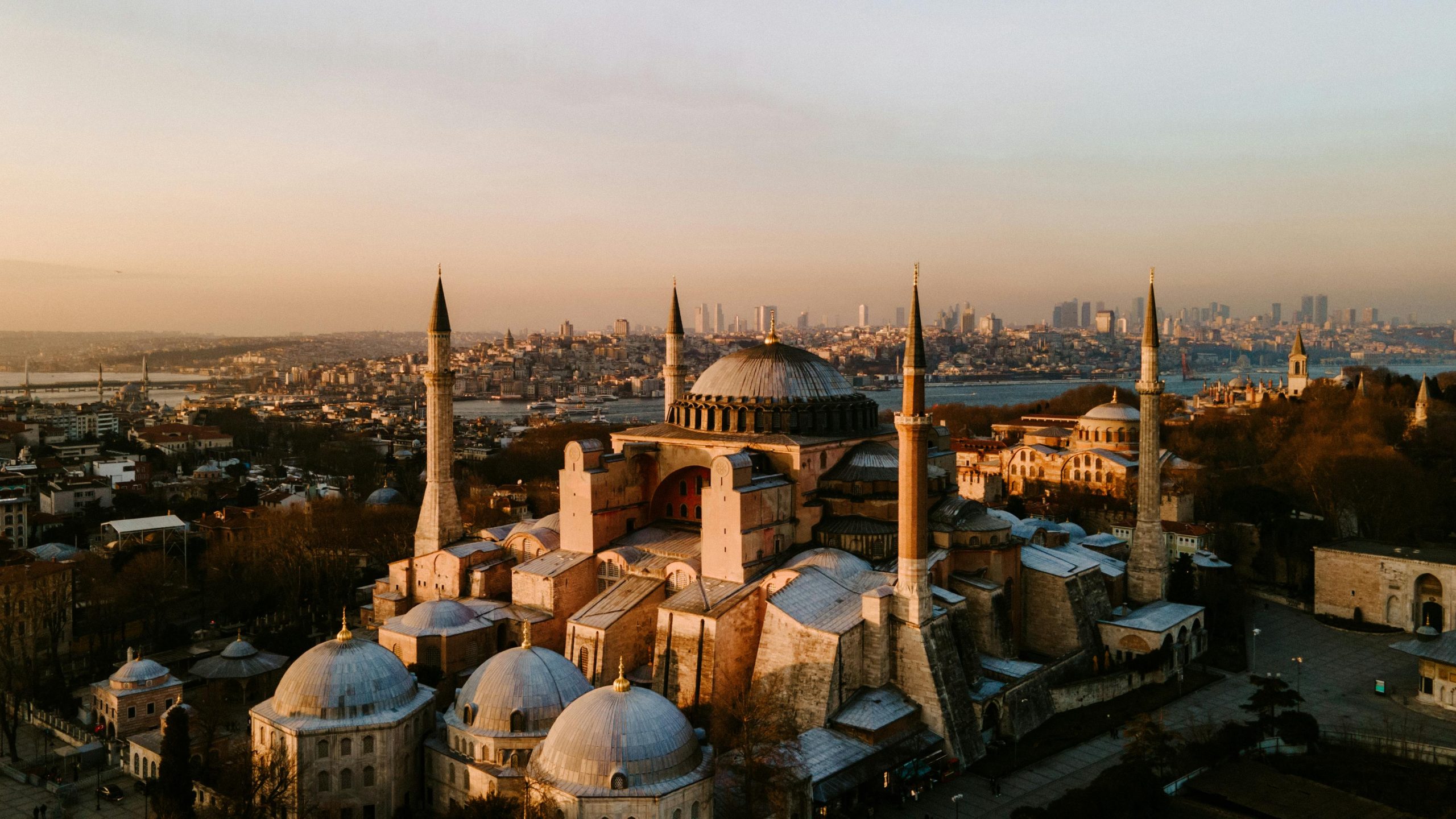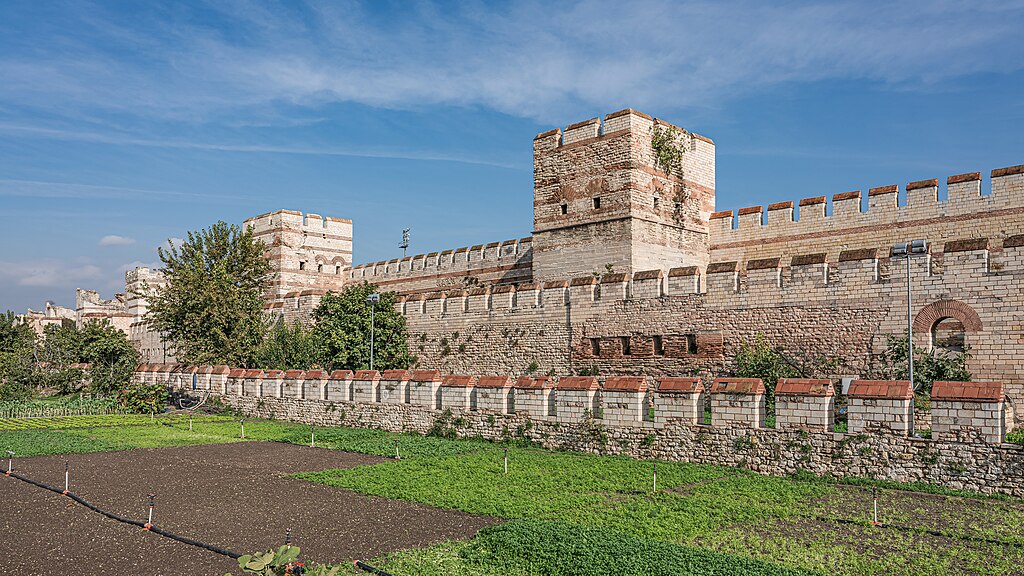Column of Constantine, Istanbul
Historic Site in Istanbul

Rising above Istanbul's historic heart, the Column of Constantine — also known as the Burnt Column — stands as one of the city's oldest surviving Roman monuments. Commissioned by Emperor Constantine the Great in 330 AD, it marked the dedication of Byzantium as the new capital of the Roman Empire, renamed Constantinople. Once crowned with a colossal statue of Constantine depicted as Apollo holding an orb said to contain a relic of the True Cross, the monument proclaimed the emperor's divine authority and the dawn of a new imperial age. Today, the column remains one of the must-see places in Istanbul for anyone fascinated by the city's transformation from ancient Rome to modern Turkey.
Standing along the ancient Mese (now Divan Yolu Avenue) between Sultanahmet Square and Beyazıt Square, the Column of Constantine is a great place to visit on a walking tour of Istanbul, connecting many of the city's key Byzantine sites. Though weathered by time, earthquakes, and fire, the monument continues to rise defiantly over the centuries of history that swirl around it.
Table of Contents
- History and Significance of the Column of Constantine
- Things to See and Do at the Column of Constantine
- How to Get There
- Practical Tips on Visiting the Column of Constantine
- Is the Column of Constantine worth visiting?
- FAQs for Visiting the Column of Constantine
- Nearby Attractions to the Column of Constantine
History and Significance of the Column of Constantine
The Column of Constantine was erected in 330 AD as the central feature of the newly created Forum of Constantine — the ceremonial heart of Constantinople. Made from porphyry stone quarried in Egypt, the column originally stood about 50 meters high and was composed of eight massive cylindrical drums joined by bronze rings. At its summit stood a statue of Constantine, portrayed as Apollo-Helios, holding a globe that symbolized universal dominion. Beneath its base lay a sanctuary that, according to legend, contained an extraordinary collection of Christian relics, including fragments of the True Cross, items from biblical miracles, and even a statue of Pallas Athena brought from Troy.
In 1106, a fierce storm toppled the statue and damaged the upper part of the column. Emperor Manuel I Komnenos later repaired it and added a cross to its summit. When the Latin Crusaders sacked Constantinople in 1204, they stripped the bronze rings and decorations for their metal. After the Ottoman conquest in 1453, the cross was removed, but the column itself was preserved as a landmark. Its scorched appearance — a result of a devastating fire in 1779 — earned it the enduring nickname “the Burnt Column.” Sultan Abdülhamid I restored it soon after, enclosing its base in masonry and ensuring its survival into the modern era.
Things to See and Do at the Column of Constantine
Today, the Column of Constantine rises 35 meters above the bustling traffic of Çemberlitaş Square, a striking reminder of the city's Roman foundations. Visitors can walk right up to its stone base, still showing traces of its fiery past in its darkened color. Though the original statue and relics are long gone, the column's sheer presence tells its story: a monument that once stood at the heart of an empire.
Plaques nearby explain its history, while the surrounding neighborhood — filled with cafés, carpet shops, and old Ottoman bathhouses — provides a lively backdrop. The column also offers a perfect orientation point for exploring the nearby Grand Bazaar, Nuruosmaniye Mosque, and the remains of the ancient Mese road. For photographers, early morning or dusk provides dramatic light against the column's textured surface and the modern skyline rising beyond.
How to Get There
The Column of Constantine is located in Çemberlitaş Square, along Divan Yolu Avenue in Istanbul's Fatih district. The T1 tram line stops directly at Çemberlitaş station, just steps away from the monument. For visitors arriving by train, Sirkeci railway station is about a 20-minute walk from the site. You can use the official TCDD Taşımacılık website to check schedules, compare routes, and purchase tickets for Turkey's national and regional trains operated by TCDD. For a more streamlined experience (especially if you prefer an English interface or want to compare across countries), we recommend using Omio, which allows you to easily compare prices, schedules, and book train tickets across Turkey and the rest of Europe — all in one place. For those driving, limited parking is available in the area, with paid lots near Divan Yolu and the Grand Bazaar. If you are looking to rent a car in Turkey I recommend having a look at Discover Cars, first, as they compare prices and review multiple car rental agencies for you.
Practical Tips on Visiting the Column of Constantine
- Best time to visit the Column of Constantine: Early morning or evening when the square is less busy.
- Entrance fee in Euros: Free.
- Opening hours: Accessible 24 hours daily as a public monument.
- Official website: Not applicable.
- How long to spend: 15–20 minutes, or longer when exploring nearby attractions.
- Accessibility: Fully accessible via paved pedestrian areas.
- Facilities: Cafés, shops, and rest areas nearby.
- Photography tip: Capture the column with the tram or Divan Yolu in the background to contrast ancient and modern Istanbul.
- Guided tours: Included in many Byzantine and Old City walking tours.
- Nearby food options: Plenty of cafés, bakeries, and traditional Turkish eateries around Çemberlitaş.
Is the Column of Constantine worth visiting?
Yes — absolutely. The Column of Constantine is one of the oldest surviving symbols of Istanbul's foundation, bridging ancient Rome and modern Turkey. It's a simple yet profoundly significant monument that still marks the very axis of the city's history. For anyone tracing the story of Constantinople, this site is a must-visit stop that embodies both endurance and empire.
FAQs for Visiting the Column of Constantine
Why is it called the Burnt Column?
Because a major fire in 1779 scorched its surface, leaving dark marks that are still visible today.
What happened to Constantine's statue?
It was destroyed by a storm in 1106; later, a cross was placed on top, which was removed after 1453.
Can visitors climb the column?
No, it's not open for climbing; it's a protected monument.
Is it the same height as in ancient times?
No, the original column was 50 meters tall; today it stands around 35 meters due to damage and restorations.
Are there any relics inside the base?
The legendary relics have never been verified and are believed to have been lost or removed centuries ago.
Nearby Attractions to the Column of Constantine
- Grand Bazaar – One of the world's oldest covered markets, filled with shops and local crafts.
- Nuruosmaniye Mosque – A beautiful Ottoman mosque adjacent to the bazaar, built in Baroque style.
- Çemberlitaş Hamamı – A 16th-century Turkish bathhouse designed by Mimar Sinan.
- Sultanahmet Square – The ancient Hippodrome and home to the Blue Mosque and Hagia Sophia.
- Theodosius Cistern – A restored 5th-century underground reservoir showcasing Roman engineering.
The Column of Constantine appears in our Complete Guide to Visiting Istanbul!
This website uses affiliate links which may earn a commission at no additional cost to you!
Visiting Column of Constantine
Nearby Attractions
- Theodosius Cistern (0.2) km
Historic Site in Istanbul - Grand Bazaar (0.4) km
Bazaar in Istanbul - Turkish and Islamic Arts Museum (0.4) km
Museum in Istanbul - Sultanahmet Square (0.4) km
Square in Istanbul - Obelisk of Theodosius (0.5) km
Historic Site in Istanbul - Serpent Column (0.5) km
Historic Site in Istanbul - Walled Obelisk (0.5) km
Historic Site in Istanbul - German Fountain (0.5) km
Fountain in Istanbul - Basilica Cistern (0.6) km
Historic Building in Istanbul - Stone of Milion (0.6) km
Historic Site in Istanbul


